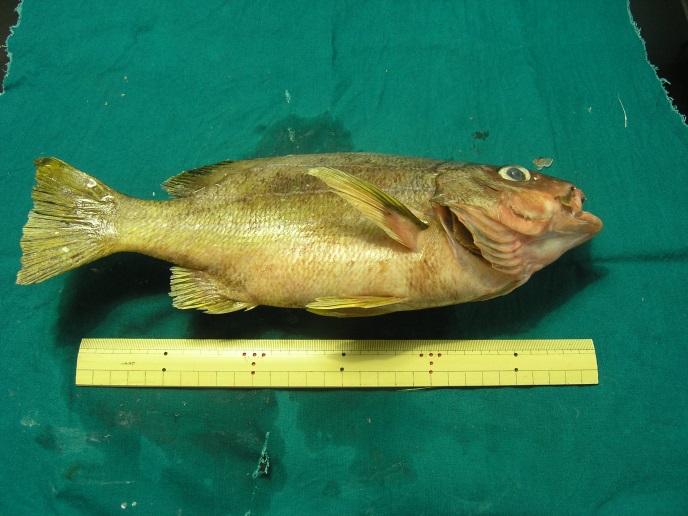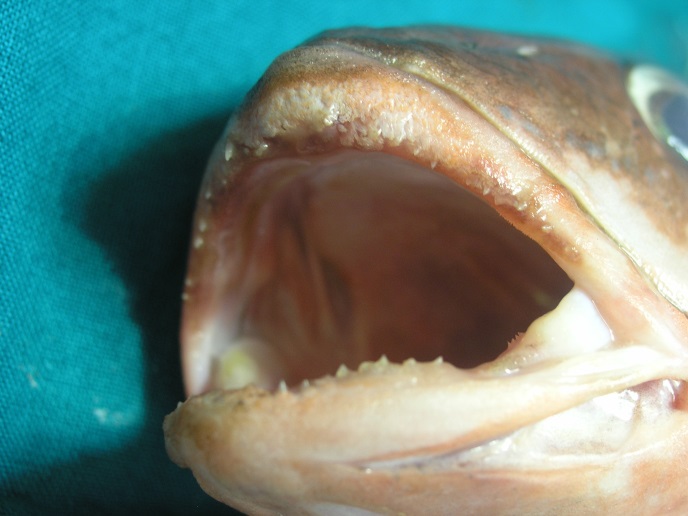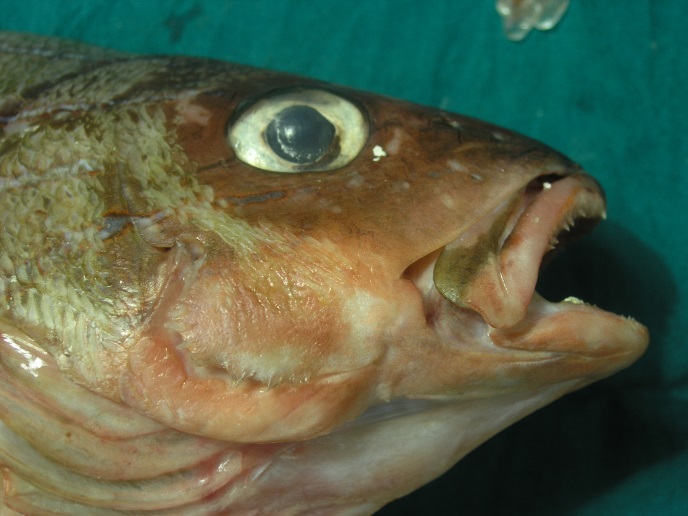: red snapper


The red snapper, Lutjanus campechanus, is a reef fish found off the Atlantic and Pacific coasts of The Americas and the Gulf of Mexico. The original name in Latin American Spanish is Huachinango or Pargo.
The red snapper commonly inhabits waters from 30 to 200 ft (10 to 60 m), but can be caught as deep as 300 ft (100 m) or more on occasion. They stay relatively close to the bottom, and inhabit rocky bottom, ledges, ridges, and artificial reefs, including offshore oil rigs and shipwrecks.
The red snapper's body is very similar in shape to other snappers, such as the mangrove snapper, mutton snapper, lane snapper, and dog snapper. All feature a sloped profile, medium-to-large scales, a spiny dorsal fin and a laterally compressed body. Red snappers have short, sharp, needle-like teeth, however they lack the prominent upper canine teeth found on the mutton, dog, and mangrove snappers.
Coloration of the red snapper is light red, with more intense pigment on the back. Juvenile fish can also have a dark spot on their side which fades with age.
Like most other snappers, red snappers are gregarious and will form large schools around wrecks and reefs. These schools are usually made up of fish of very similar size.
Red snapper are a prized food fish and are caught commercially, as well as recreationally. Commercially, they are caught on multi-hook gear with electric reels, as gill netting has been banned in the Gulf of Mexico, from which most of the commercial harvest comes.
Genetic studies have shown, however, that many fish sold as red snapper in the USA are not actually L. campechanus, but other species in the family.[1][2] This kind of seafood mislabeling is probably common with species that suffer from heavy overfishing, and whose stocks are depleted to the point that supply cannot keep up with demand.
Red snapper will eat almost anything, but prefer small fish and crustaceans. They can be caught on live bait as well as cut bait, and will also take artificial lures, but with less vigor. They are commonly caught up to 10 lb (4.5 kg) and 20 inches (50 cm) in length, however there have been fish taken over 40 lb (18 kg).
A red snapper attains sexual maturity at age 2-5 and an adult snapper can live for more than 20 years.
Studies have shown that shrimp is what makes this fish species red
두부 촬영 모습



